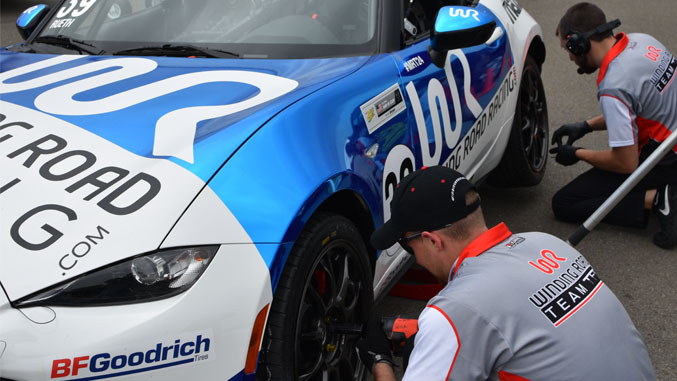Speed Secrets: Be a More Sensitive Driver

Let’s talk about what I call “Sensory Input Sessions.” The reason for these sessions are to improve the quality, and increase the quantity of the sensory information from your vision, feel (kinesthetic) and hearing (auditory) going into your brain. The more sensory input, and the better its quality, the better the output will be from your bio-computer (your brain). In other words, the better your skills will be, and ultimately, the better you will race.
Here’s how they work: Start with an auditory session. During a test day or race weekend, take a session or portion of a session to focus only on hearing the kart and track. Make note of every sound – the exhaust note, engine mechanical noises, tires gripping the track surface, chassis bottoming out against the track, wind noise passing your helmet, etc.
Then, use a session to just feel the kart and track, making note of the g-forces against your body, the tires as they grip the track and then begin to slide, the amount of flex in the tire sidewalls, how harsh or soft the kart feels going over bumps on the track. How quick is the steering response? Notice the vibrations and feedback through the steering wheel, the vibrations in the pedals and your body, and so on.
And finally, spend a session focusing on what you can see, such as every little crack and undulation in the track surface, the direction your visual point of view changes as the kart rotates and slides, where you can see other karts on other parts of the track, etc. How far ahead are you looking? Can you look farther ahead? Can you take in more information visually?
Doing these exercises will make you much more sensitive to what the kart is doing, and improve the quality of input to your brain. Again, the better the quality of input, the better your output (skills) will be; not to mention becoming a better test and development driver.
Speed Secret: The more quantity, and the higher the quality of sensory information going into your brain, the better the quality the output will be – the better you will drive.
Just remember: your tires are talking to you, telling you when they are at the limit and when they are not. Are you paying attention? Are you listening to them? Are you feeling what they are telling you?
Now do a Traction Sensing Session, where you combine all your senses to simply focus on sensing whether the tires are at the very limit of traction. Dedicate part or all of a practice or test session to simply focus on sensing the tires’ traction. While driving on the race track, make note of the vibrations and feedback through the steering wheel – does the steering get lighter or heavier as the tires slide more? Make note of the sound coming from the tires. Do they make more or less noise as the slide more? Overall, how does the car feel as the tires begin to slide more and more? How much warning do the tires give before they start to slide too much? Forgetting practically everything else – and especially lap times – practice reading how much traction the tires have around every inch of the track.
This works even better when you put a 1 to 10 rating scale on it, with 10 being the very limit of traction just as the tires start to let go, and 1 being the grip they have while going down a straightaway. Then, as you drive around the track, you can actually call out to yourself the amount of traction the tires have. After each session, be sure to write down your ratings for each and every corner – and even each segment of each turn. The physical act of writing the number down helps you become more aware, and makes you more likely to up that number the next time on the track.
Speed Secret #15: Regularly use Traction Sensing Sessions to improve your ability to drive at the limit.
Practice paying attention to your tires. In all the coaching I’ve done, the Sensory Input and Traction Sensing Sessions have made the single biggest improvement with the drivers I work with. There are two reasons for this. First, as I said before (and will probably say again a few more times in the future), the better the quality and more quantity of sensory input going into your brain, the better the output (your skills) will be. And second, when you’re just focused on taking in more sensory input, you stop trying to drive fast. I’m sure I don’t need to tell you that trying to drive fast rarely results in being fast. As you’ve probably already experienced, the harder you try, the slower you usually go.
If you use these techniques on a regular basis, I guarantee your traction sensing abilities will improve, and this will lead to your ability to drive more consistently at the limit. And that’s where the last few fractions of second are found. How much is a fraction of a second worth to you?
Ross Bentley
For more information about Ross’s tips, coaching, eCourses, newsletter, Virtual Track Walk videos, and other resources to help you drive at your best, go to www.SpeedSecrets.com


















